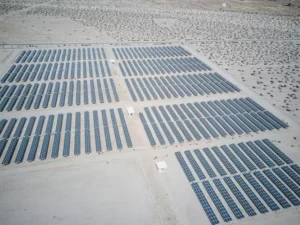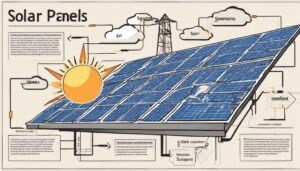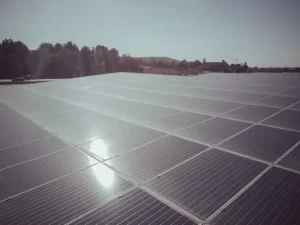The Australian Government offers a rebate on solar panels through the Small-scale Technology Certificate (STC) scheme, which provides incentives for households and small businesses to install eligible renewable energy systems. The rebate amount depends on system size, geographical location, and installation date. Homeowners can claim up to $2,664 in Zone 1, $2,424 in Zone 2, $2,184 in Zone 3, and $1,944 in Zone 4 for a standard 6.6 kW system. To qualify, homeowners must own the installation property, reside in Australia, and use Clean Energy Council accredited installers. By combining the federal rebate with state and local schemes, homeowners can further reduce the upfront cost of solar panel installations.
Understanding the STC Scheme
The STC scheme is an effective renewable energy incentive, encouraging households to shift to solar power. The value of STCs fluctuates based on market dynamics, currently around $36 per STC, impacting the overall rebate amount for solar installations. To qualify for the STC scheme, solar panel installations must be performed by Clean Energy Council accredited installers using approved equipment. The scheme is set to conclude in 2030, with the goal of increasing the adoption of renewable energy technologies.
Key aspects of the STC scheme include the variation in certificates awarded based on climate zones, with households in Zone 1 expected to generate around 10.7 MWh and those in Zone 4 around 7.8 MWh annually.
Rebate Eligibility and Application
To be eligible for the Australian Government rebate on solar panels, homeowners must meet specific criteria, including residing in Australia, owning the installation property, and using a Clean Energy Council accredited installer. The application process is relatively straightforward, with installers handling the registration of Small-scale Technology Certificates (STCs) on behalf of the homeowner, and the rebate applied as a discount on the installation cost. Homeowners can also explore additional rebates for solar batteries, expected to be available in November 2023, which can provide further financial incentives for eligible systems.
Eligibility Criteria
While traversing the process of securing the Australian Government rebate on solar panels, homeowners must first establish their eligibility for the program. The eligibility criteria for the rebate program are straightforward and primarily centered around the type of solar panels utilized and the installation requirements. Homeowners must guarantee that the solar panels and inverters used in the system are approved and comply with performance standards. The solar panel types must meet the Australian Government's standards for quality and efficiency. Installation requirements also play a significant role, as the system must be installed by a Clean Energy Council accredited installer.
Additionally, homeowners must reside in Australia and own the property to be eligible for the rebate. The system must be new, and the rebate amount varies based on system size, location, and installation date. Homeowners must also note that the program is not means-tested, making it accessible to all eligible installations without income restrictions.
Application Process
Securing the Australian Government rebate on solar panels requires a straightforward application process that begins with selecting a certified installer. This installer selection is vital as they will manage the registration process after completing the installation of the solar system. Homeowners must guarantee the selected installer is accredited by the Clean Energy Council to be eligible for the rebate.
| Application Step | Description |
|---|---|
| Step 1: Installer Selection | Choose a certified installer accredited by the Clean Energy Council. |
| Step 2: System Installation | The selected installer completes the installation of the solar system. |
| Step 3: Registration | The installer manages the registration process, assigning Small-scale Technology Certificates (STCs) to the system owner. |
| Step 4: Rebate Claim | The homeowner claims the rebate, which can be up to $1,400 in 2024, depending on the system size, location, and expected energy production.
The application timeline is relatively short, and homeowners can expect to receive their rebate after the registration process is complete. The STC value and rebate amount decrease annually, so it is important to install solar systems sooner rather than later to maximize financial incentives.
Solar Panel Rebate Amounts
The Australian Government rebate program for solar panels offers varying rebate amounts, influenced by factors such as system size, geographical location, and installation date. Rebate values are categorized into different zones, with Zone 1 potentially providing higher rebates of up to $2,664 for a 6.6 kW system, based on current STC prices. These rebate amounts are subject to change annually, with a typical reduction of around 4-5% each year, and are also limited by STC system size limits, which will be explored in more detail.
Rebate Values and Zones
Rebate values for solar panel installations in Australia are determined by geographical zones and Small-scale Technology Certificates (STCs) market prices. The rebate amount varies considerably across different zones, with Zone 1 yielding the highest rebate value. Understanding these zone variations is essential for homeowners to maximize their savings.
| Zone | Rebate Value (6.6 kW System) |
|---|---|
| Zone 1 | $2,664 |
| Zone 2 | $2,424 |
| Zone 3 | $2,184 |
| Zone 4 | $1,944 |
Rebate comparisons across zones reveal notable differences in the rebate values. For instance, a 6.6 kW solar system in Zone 1 is eligible for a rebate of approximately $2,664, whereas the same system in Zone 4 would receive a rebate of about $1,944. These variations are influenced by the STC market prices and the expected energy production in each zone. Homeowners should consider these factors when planning their solar panel installations to optimize their rebate amounts. By understanding the zone variations and rebate comparisons, homeowners can make informed decisions about their solar investments.
STC System Size Limits
To be eligible, the installation requirements must be met, including system size and geographical location. While rebate amounts vary by zone, the system size remains a critical factor in determining the rebate value. For example, a standard 6.6 kW solar system can receive a rebate of approximately $2,300, considerably reducing the upfront cost for consumers. It's essential to note that the STC quantity and corresponding rebate values are influenced by the expected energy production of the system until 2030. This emphasizes the importance of timely installations to maximize rebate benefits. By understanding the system size limits and installation requirements, households and businesses can make informed decisions about their solar panel installations and maximize their rebate entitlements.
Current Rebate Amounts
Australia's solar panel rebate scheme offers varying levels of financial support to households and businesses, depending on system effectiveness and mWh production. The current rebate amounts can considerably reduce the upfront costs of solar panel installations. Understanding these amounts is essential to making informed decisions about solar energy investments.
As of 2024, the rebate can cover up to $1,400 of project costs. However, rebate amounts vary by geographical zones, influencing the overall rebate value. To give you a better idea, here are some current rebate amounts:
- A 6.6 kW solar system may receive around $2,300 in subsidies after applying the rebate.
- Households in Zone 1 can potentially receive around $2,664 for a 6.6 kW system at a $36 STC price.
- The rebate is set to decrease annually until 2030, with a reduction of approximately 4-5% each year.
- The Small-scale Technology Certificate (STC) program underpins the rebates, with one STC issued for every megawatt-hour generated.
Despite rebate misconceptions, current trends suggest that the solar panel rebate scheme remains a valuable incentive for households and businesses to shift to renewable energy sources.
State and Local Government Schemes
Various state and local government schemes across the country offer financial assistance for solar panel installations, providing valuable incentives for those looking to shift to renewable energy. State initiatives, such as the Solar Homes Program in Victoria, offer rebates of up to $1,400 for existing homes, homes under construction, and rental properties, with the option of interest-free loans equivalent to the rebate amount. Each state and territory may have unique schemes that change over time, influencing the availability and amount of financial support for solar installations. Eligibility for these schemes often depends on factors such as property type, household income, and location, and may target specific groups such as social housing or renters.
Local incentives also play a significant role in promoting renewable energy adoption within specific communities. Local councils may implement their own programs, providing additional incentives to residents and businesses. For instance, some councils may offer rebates or discounts on solar panel installations, while others may provide low-interest loans or other forms of financial assistance. These local initiatives can complement state and federal schemes, making solar energy more accessible and affordable for a wider range of people.
Solar Battery Rebate Options
The Australian Government's solar battery rebate initiative is set to launch in November 2023, offering a projected savings of between $1,600 to $2,400 for eligible battery systems, thereby incentivizing the widespread adoption of energy storage technology. This rebate aims to promote the use of battery storage, enabling households to store excess solar energy for later use and enhance energy savings. To qualify for the rebate, homeowners must ascertain their solar battery systems are installed by a certified installer and meet regulatory requirements set forth by the government.
Key aspects of the solar battery rebate initiative include:
- Eligible battery systems can receive a rebate of between $1,600 to $2,400.
- Certified installers must install the solar battery systems to qualify for the rebate.
- Participation in Virtual Power Plants (VPP) may offer additional incentives, promoting collective energy management and savings.
- System specifications and compliance with regulatory requirements will determine eligibility for the rebate.
Interest-Free and Low-Interest Loans
In addition to the Australian Government's solar battery rebate initiative, interest-free and low-interest loans can further enhance the affordability of solar systems and battery storage for homeowners. These loans can cover part or full costs of the systems, allowing homeowners to reap the benefits of renewable energy without a significant upfront investment. Eligibility typically depends on factors such as system size, household income, and property type.
The loan benefits are substantial, enabling homeowners to offset loan repayments with savings on their electricity bills. For example, a $6,800 loan for a solar system can be repaid over four years at approximately $141.67 per month. Repayment strategies can be tailored to fit individual financial situations, making it easier to manage the loan. Specific state and local government schemes offer different loan options, so it's essential to check local offerings for availability and terms. By understanding the available loan options, homeowners can make informed decisions about investing in solar systems and battery storage, ultimately reducing their reliance on traditional energy sources.
Combining Rebates and Loans
Combining the Australian government's solar rebates with interest-free and low-interest loans can greatly enhance the affordability of solar systems and battery storage for homeowners. This combination is a key affordability strategy, allowing individuals to take advantage of financing options that can considerably reduce upfront costs.
When combining rebates and loans, homeowners can benefit from the following:
- Reduced upfront costs: The Australian government rebate can cover up to $1,400 of the installation cost, which can be matched by an interest-free or low-interest loan.
- Lower monthly repayments: For example, a $6,800 loan for a solar system can be repaid over four years at approximately $141.67 per month.
- Increased savings: The loan repayments can be offset by savings on electricity bills following installation.
- Targeted assistance: Applicants must meet specific eligibility criteria, including system size and household income, to qualify for both the rebate and loan programs.
Rebate Decrease and End Date
Many Australian homeowners who have been considering installing solar panels may be aware that the government rebate program is not permanent. The solar rebate program is scheduled to continue until 2030, with annual reductions of 4-5% expected each year. Homeowners are encouraged to install solar systems sooner to take advantage of current rebate levels before they decrease.
| Year | Projected Rebate Decrease |
|---|---|
| 2025 | 4-5% reduction |
| 2028 | 12-15% cumulative reduction |
| 2030 | Program scheduled to end |
The rebate amount in 2024 may cover up to $1,400 of project costs, depending on system effectiveness and expected energy production. As the rebate timeline unfolds, the value of Small-scale Technology Certificates (STC) that underpin the rebate will also decrease, impacting overall savings for new installations. Incentive strategies, such as taking advantage of current rebate levels, can help homeowners maximize their financial incentives. Delaying installation could result in considerably lower financial incentives as the rebate continues to decrease leading up to its end date in 2030. Homeowners should consider this rebate decrease when planning their solar panel installation.
Other Eligible Renewable Systems
While solar photovoltaic (PV) panels are the most common renewable energy system installed under the Australian government rebate program, they are not the only eligible technology. Homeowners can access financial support for a variety of renewable energy technologies, broadening the scope of the rebate program beyond just solar panels. This includes installations of hydro systems, which can be particularly beneficial for homes with access to flowing water.
Some of the other eligible renewable systems include:
- Hydro systems, suitable for homes with access to flowing water
- Wind turbines, ideal for properties with suitable wind speeds and space
- Air source heat pumps, which can provide both heating and cooling
- Solar water heaters, offering an alternative to traditional electric or gas water heaters
The rebate for these systems is aimed at making renewable energy investments more affordable, contributing to environmental sustainability goals. All eligible renewable energy systems must be installed by a Clean Energy Council (CEC)-approved installer to qualify for Small-scale Technology Certificates (STCs). The number of STCs awarded for each eligible system is based on the expected energy production of the system until 2030, which varies by system type and size.
Maximizing Your Solar Rebate
To further optimize your rebate, it is crucial to understand your geographical zone, as rebate values can vary greatly. For instance, the rebate for a 6.6 kW system can range from approximately $2,664 in Zone 1 to around $1,944 in Zone 4. Additionally, obtaining multiple quotes from reputable solar installers can help secure competitive pricing and guarantee you lock in the maximum available rebate for your solar system. By following these installation tips and staying informed about the rebate scheme, homeowners can maximize their solar rebate and enjoy substantial savings on their solar energy system.
Frequently Asked Questions
How Much Is the Australian Government Solar Rebate?
The Australian government solar rebate offers substantial solar panel savings, providing renewable energy incentives of approximately $350 per kW installed, with typical rebates for a 6.6 kW system reaching around $2,300 in 2024.
What Is the Federal Government Rebate for Solar Panels in 2024?
The 2024 federal government rebate for solar panels incentivizes adoption, with a potential rebate value of up to $1,400, contingent on solar panel eligibility and successful rebate application through the Small-scale Technology Certificate scheme.
What Is the Solar Rebate in NSW?
The $7,000 solar rebate in NSW offers significant installation cost savings, providing substantial NSW solar incentives for homeowners, with the rebate amount varying based on system size, expected energy production, and geographical location.
What Is the Australian Government Energy Rebate?
The Australian government energy rebate focuses on energy efficiency and renewable incentives, providing financial assistance to households and businesses adopting sustainable practices, while promoting the uptake of renewable energy sources, such as solar power installations nationwide.
Final Thoughts
The Australian government rebate on solar panels plays a significant role in promoting renewable energy adoption. The Small-scale Renewable Energy Scheme (SRES) has been instrumental in reducing the upfront cost of solar installations. As the rebate amount decreases annually, it is essential for households and businesses to stay informed about the available incentives. By understanding the rebate schemes and combining them with other government offers, individuals can maximize their solar rebate and contribute to a more sustainable future.



